California Governor Gavin Newsom’s presidential ambitions hinge as much on appearances as they do realities, and the unsightly presence of homeless people throughout California is a reality he can’t make disappear. Born of desperation fostered by the futility of his own efforts to eliminate homelessness, Newsom has decided to blame California’s mayors for his own failure to understand the fundamental nature of a humanitarian emergency that grows worse by the day.
Early this month, Newsom announced he would withhold $1 billion in homeless funding until local governments produce better plans for reducing the number of people living on the streets and in the dirt. He couldn’t have offered a better illustration of his failure to comprehend the problem when he said,
It’s a crisis. Act like it. Everybody step up. I’m not the mayor. You want me to come in? I’ll do the job. I’ll do it. Happily. I’ve been going into cities cleaning up encampments. Has anyone gotten the hint? If someone did that to me when I was mayor, I’d be like, ‘OK, I got it.’”
The governor apparently doesn’t realize that many cities and counties have been “cleaning up encampments” for years, only to have the campers relocate to a nearby site, where they wait to repeat the relocation merry-go-round. Newsom seems unable to learn from these failures; instead, he wants more of the same.
This reality — the fact that homeless people have nowhere to go — has been apparent almost since homeless numbers became too visible to ignore. Nonetheless, “cleanups,” better known as “sweeps,” have been the only consistent tactic that state has offered in response to homelessness since the problem emerged over a decade ago.
A failed formula for futility, sweeps are often conducted with great fanfare. The latest efforts — touted with much preening and chest puffing by Newsom himself — have been by Caltrans along property that borders the state’s highways.
The effect of these sweeps is to move homeless people into the very cities Newsom claims are failing on homelessness. The mayors of those cities, taking cues from the governor himself, then sweep the relocated camps, whereupon the campers move back to the Caltrans sites. It’s a circle of futility. Nonetheless, state and local leaders repeat it year after year, in extravagant displays of wasted dollars.
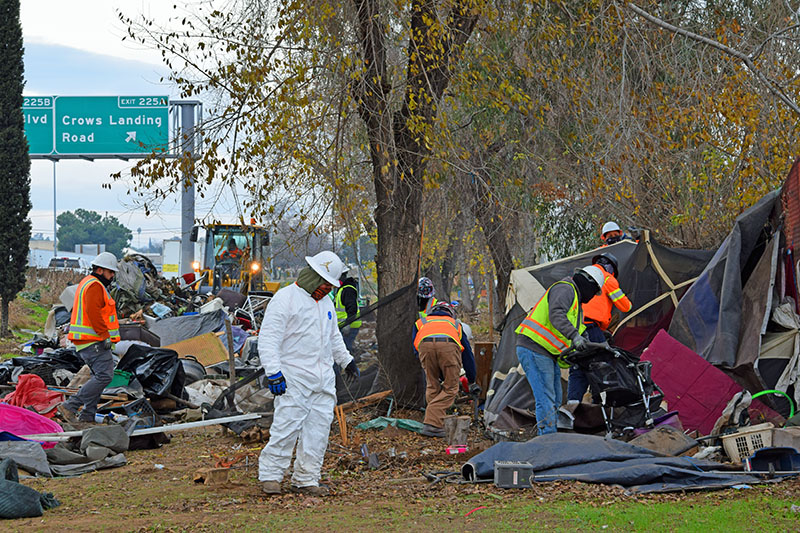
The simple facts of homeless require tremendous exertions of will to deny, but state and local leaders have been up to the task. Among these hard but simple facts are the following:
- A large percentage of homeless people are mentally ill. We lack sufficient facilities for housing and treatment of the mentally ill.
- Large numbers of homeless people are on permanent disability. Their disability incomes are too low to afford housing of any kind, even if it were available. It is not.
- We lack affordable housing for many of our working poor and it will be years before we have enough.
- We also lack transitional housing options for people waiting for traditional housing in the form of apartments or boarding homes. Many of these people are currently living in vehicles.
- Drug addiction is a health problem we are unprepared to treat. We lack social workers, treatment facilities, and health professionals sufficient to the demand.
- Congregate shelters were meant for short-term stays. They are an obsolete option for today’s long-term homeless needs and, in any case, there aren’t enough such shelters for the numbers of people who could benefit from using them.
- Virtually every city and county in the state is in routine violation of the 9th Circuit Appeals Court ruling that prohibiting camping in public spaces is illegal when insufficient shelter is available. In fact, homeless numbers everywhere are far greater than shelter capacity.
The only aspect of homelessness Gavin Newsom seems able to understand is that it is indeed “a crisis.” What he fails to comprehend is that it’s a humanitarian crisis featuring fellow citizens in dire need.
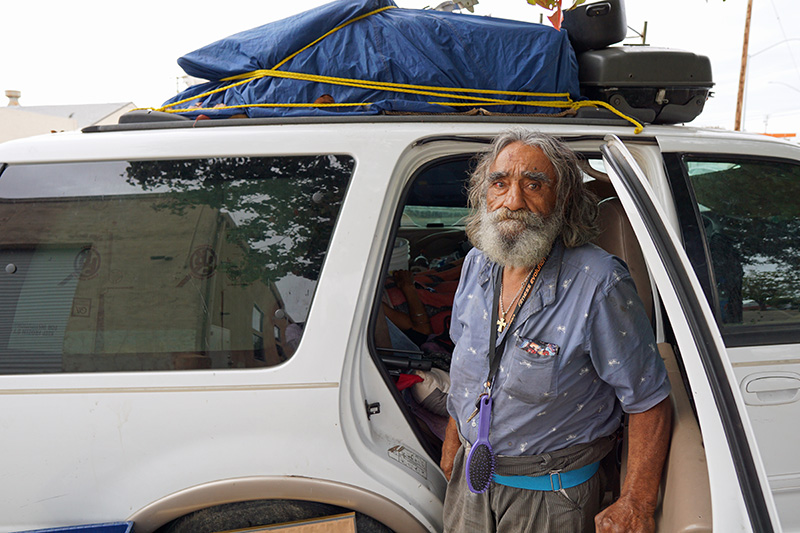
Ordinarily, the first tactic in any crisis is harm reduction. Among the multiple harms of homelessness, the most damaging are to homeless people themselves. State and local leaders fail to recognize these harms.
Depriving the mentally ill, the sick, the disabled and the traumatized the most rudimentary of civilized comforts — toilets, running water, a secure place to lay their heads — violates fundamental standards of decency, especially when cost-effective remedies for harm reduction are readily available. Forcing people in need to live in the dirt and on the streets also adds to their illness in the form of extreme stress, poor nutrition and hygiene, and increased use of dangerous drugs.
One of the few cases when local authorities supported significant harm reduction for homelessness occurred in Stanislaus County after the 2018 ruling by the 9th Circuit Court of Appeals permitted camping in public spaces whenever homeless numbers exceeded available shelter beds. Almost immediately after that ruling, when tents started appearing in some of the county’s most popular city parks, Stanislaus County permitted camping in Beard Brook Park, a seldom-used park in the City of Modesto’s industrial district.
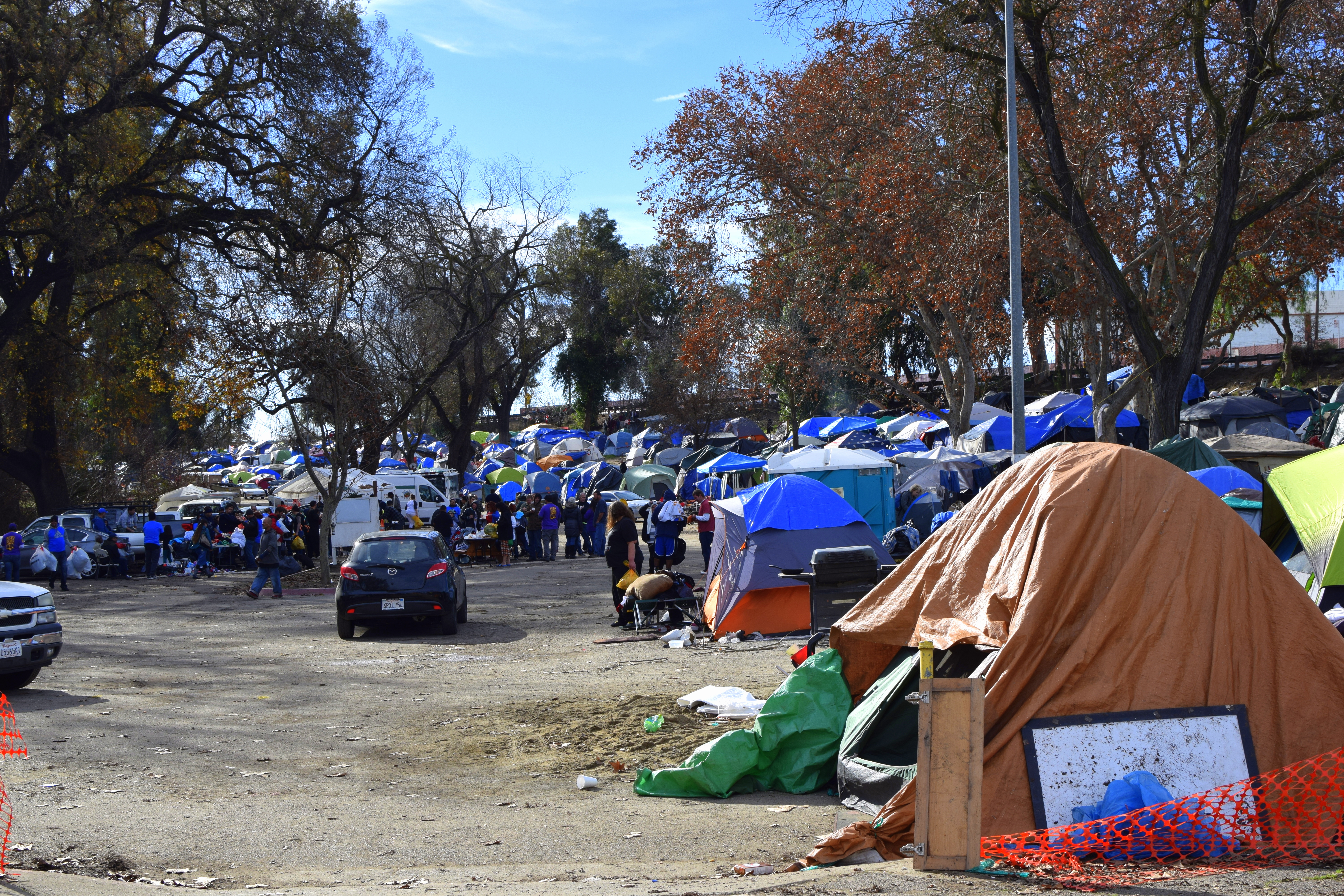
Renamed “Beard Brook Village,” the number of campers in Beard Brook Park soon rose to over 300. Early in 2019, the encampment was moved to a nearby site under Modesto’s 9th Street Bridge.
Officially named the “Modesto Outdoor Emergency Shelter (MOES), campers were provided with Porta-Potties, running water, and officially-sanctioned security at an estimated total cost of $13 per person per day. Numbers of camp residents soared to almost 500.
Numbers of quality of life crimes went down. City of Modesto Spokesman Thomas Reeves cited, “a direct correlation between allowing for our homeless individuals to go into one location and the calls for service and the quality of life crimes that we would otherwise experience in other parts of the city go down.”
At MOES, on-site service providers found it is far easier to assess needs and provide help for camp residents than for people at scattered campsites around the region. Volunteers and charitable organizations came to the same realization. It also became apparent that there were far fewer services available than there was need-driven demand, even though “Stanislaus County provided 3,100 services and transitioned 25 families to homes” during the short time MOES was open.
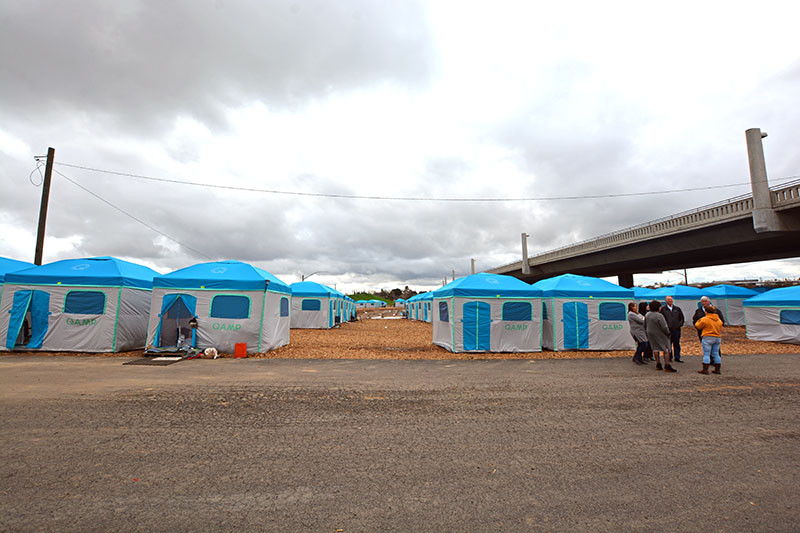
MOES was closed down in December of 2019, less than a year after it opened. City and county officials touted the opening of a 182-bed low barrier shelter as the new alternative to permitted camping. Under the ruling of the Ninth Circuit Court, the discrepancy in numbers — 182 beds and almost 500 homeless campers — should have led to permitted camping for those who couldn’t get into the new facility. It didn’t.
Instead, Stanislaus County and the City of Modesto began a game of ignoring the spirit of the law while pretending to follow the letter of the law. They arranged to have at least five beds perpetually available, secure in the knowledge that homeless people lack the will and resources to challenge authorities on matters of law and justice.
“We’ve been making it very clear since the beginning of this issue over a year ago…we are not going to criminalize homelessness, but there will be accountability for the negative impacts of vagrancy-related issues in town.”
Since that 2019 statement, homeless numbers in Modesto and nearby have risen dramatically. The primary tactic for “reducing” homelessness has remained periodic sweeps of homeless camps.
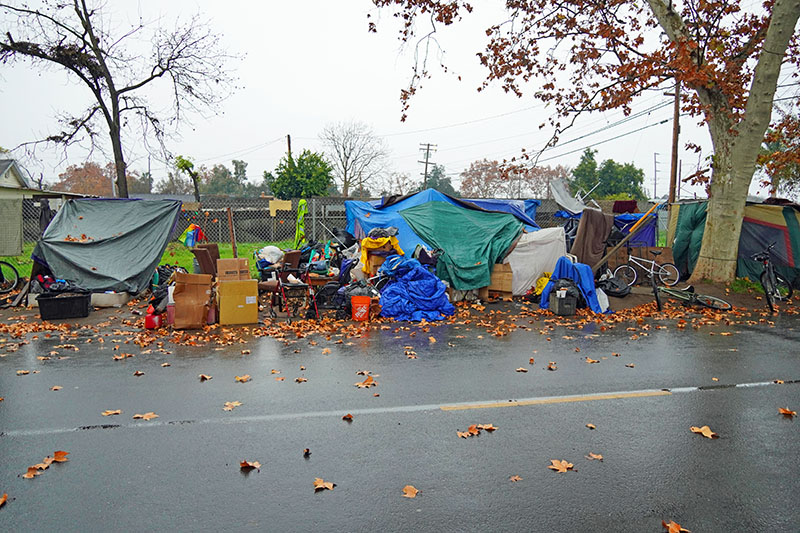
As for “accountability,” the Final Report of the 2022 Stanislaus County Civil Grand Jury on homelessness found that “accountability is lacking,” not for people experiencing homelessness, but for failed efforts by Stanislaus County to mitigate its “negative impacts,” despite the, “significant dollars spent.”
Like Gavin Newsom, local authorities throughout California prefer to avoid the hard facts of homelessness. Instead, they’re content to waste taxpayer dollars in futile attempts to sweep homelessness under the rug through an endless routine of “cleanups” that achieve nothing more than moving people in dire straits from one location to another.
Instead of providing sick and needy people cost-effective necessities of safety, running water and toilets at permitted campsites, California’s leaders have chosen to treat them like refuse, and seem surprised when they don’t just go away.
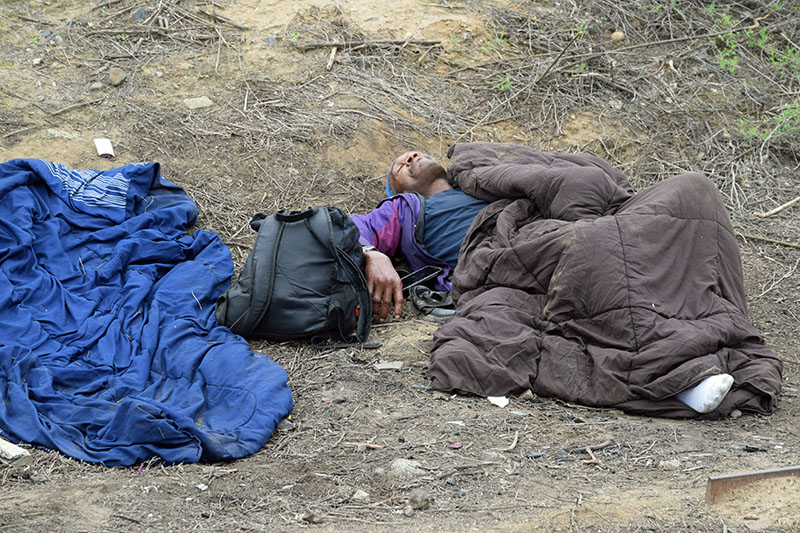
Today’s humanitarian crisis of homelessness is as much due to hard hearts and closed minds as it is to a multitude of other causes, none of which will be remedied for years. Meanwhile, billions of dollars continue to be wasted in fruitless attempts to wish the problem away.
When the governor passes the buck, everyone passes the buck.

HEAR YE, HEAR YE, READ ALL ABOUT IT
https://sanjosespotlight.com/shaw-the-season-of-reflection/
I want a copy to view, of Stanislaus County’s HOMELESSNESS PLAN submitted to the State, that Governor Newsom read. Who knows perhaps it was one of the best plans. Newsom did say that a paltry few were satisfactory. Winner or loser, WE VALLEY CITIZENS deserve to know how forward thinking and farsighted this county, Stanislaus, managed to evolve toward success.
WE MUST NOT BE LEFT IN THE DARK, AS USUAL, ABOUT STANISLAUS & MODESTO, AND OTHER CITIES/RURAL AREAS PLANS TO HOUSE OUR FELLOW NEIGHBORS WHO ARE SUBJECTED TO LIFESTYLES WITHOUT PERMANENT SHELTER. WE WANT TO KNOW HOW MUCH MORE MONEY THEY THOUGHT IT WOULD TAKE TO SAFELY HOUSE OUR ENTIRE COMMUNITY.
THE CLOCK IS TICKING, NO TIME TO WASTE, BOARD OF SUPERVISORS AND MAYORS. COUGH YOUR PLAN UP OR WE CITIZENS WILL COMPEL THE FACTS.
Well for one thing What is Gavin Newsom doing with all the MONEY wasted on the High speed train. Billions of dollars. There needs to be a Investigation not by the cheating Government of California to just steal more money. It’s is so Corrupted it smell ready bad .and these are supposed to be people we all voted into office to make thing right . Not to keep stealing
Such a good history of good intentions thwarted by reality.
And your links to further information, at the bottom of your pieces, provide very useful and pertinent additional information. Thanks!
If Newsom has loftier ambitions than governor of California, the homeless issue has the potential to be an anchor around his neck.
The border/immigration issue is a great example. Everyone knows something needs to be done, and there have been comprehensive attempts at compromise in Congress. But under the last three presidents, each of the bi-partisan compromises was killed in the House by ultra-conservatives. Why? Because they couldn’t be seen backing a middle-of-the-road compromise, as that would risk the support of their more radical base.
Newsom likely understands the sketchy nature of throwing massive funds at the homeless while middle and low income working Americans are struggling. That won’t fly in swing states. The minute the homeless are elevated above working Americans on the funding food chain, is when national support for Newsom’s grand aspirations begins to evaporate. At least in theory. This passing the buck to mayors might just be a clever way to dodge responsibility or brush this hot potato aside.
If California was a country we would have the fourth largest economy in the world. California has more population than the whole country of Canada
The homeless problem has sub problems, joblessness, drug addiction, health and Mental health problems. I think the Governor is right in bringing some light to the problem. In my opinion some cities and counties like Los Angles, San Francisco are not doing their part to help end homelessness and they have a large population.
I think making counties and cities do a do over is a correct course. However one billion dollars maybe just a down payment on the problem for the high cost of building shelter wiil not let that go to far.
Eric, You are right on. But, what is the solution?
Duane Nelson: As I’ve mentioned above, first we need to get homeless people onto safe ground for assessment and what remediation we can offer; right now there is too little, but we can mitigate and limit the damage. Long term, we need to rebuild systems of care and rethink housing and shelter options including considering such things as boxable houses. And even longer term, we need to realize we are in a new world of challenges that includes climate change, shifting economies, and greater demands on resources than private enterprise can handle. We need to revive democratic government and bring back civic engagement and public service. Big tasks.